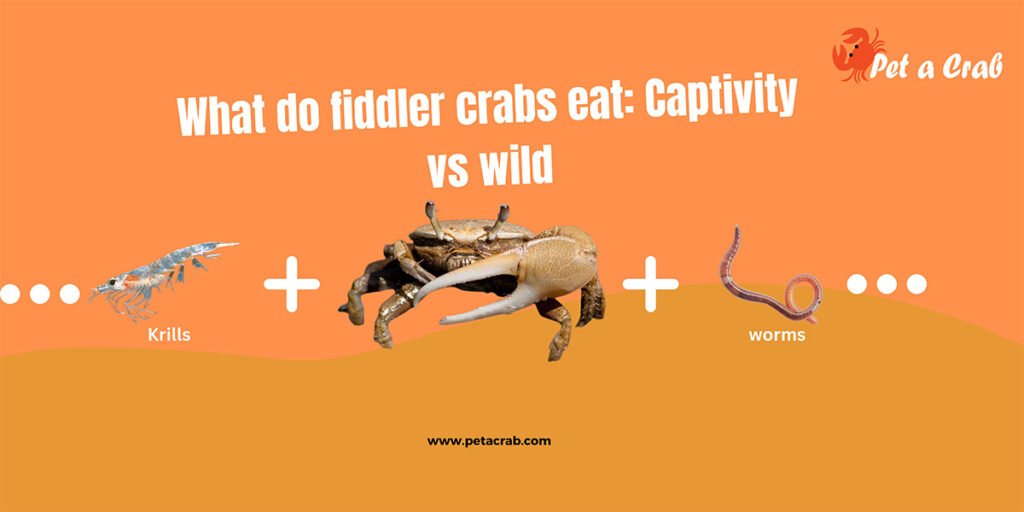Meet the Pitho Crab (Pitho mirabilis), a fascinating little algae-eater that’s quickly becoming a favorite among aquarists. Known for their camouflaged look, gentle temperament, and exceptional algae-cleaning skills, these crabs bring personality and utility to any tank.
Here you will learn everything you need to know about the pitho crab, including their interesting habits, care guide, and diet.
Quick overview of pithos crab
- Scientific Name: Pitho mirabilis
- Care Level: Easy
- Reef safe: Yes/caution
- Max Size: 2 inches
- Diet: omnivore
- Tempermant: Semi-aggressive
- Coloration: Brown, Tan, Green
- Temperature: 72-78 °F
- Habitat type: Saltwater aquarium
Some facts about pitho crab
These little crabs (pitho mirabilis) belong to the Mithracidae family, which includes some popular species like Decorator Crabs, Emerald Crabs, and Ruby Mithrax Crabs. Pitho Crabs share some of the behavior and appearance traits of their relatives, but they have their own charm that makes them stand out.
Many aquarists have found them willing to accept food directly from their hands and females are especially gentle. Their calm nature makes them an excellent choice for peaceful tank setups. They don’t scavenge aggressively like some other crab species, so they coexist well with other marine life.

Note: Pitho crab and pithos crab are the same species.
Appearance
Pitho crabs have a bulbous body with a mix of molted brown, tan, and yellowish colors that give them a rugged, camouflaged look. The distinct appearance helps them blend into rocky environments, making them great at hiding from predators.
One of the most interesting features of pitho crabs is their cupped claws. These claws aren’t just for show; they are specially adapted to pull algae from rocks and other surfaces. It’s amazing to watch them work; they use their claws almost like tweezers, efficiently picking off bits of algae for a quick snack. This makes them a helpful addition to a tank when dealing with minor algae growth.
When it comes to size, pitho crabs are quite small. Females usually reach about 1.5 inches in length, and they have noticeably larger claws that can even double the size of their bodies. Males are a bit smaller, around 1.25 inches, with much tinier claws. You can often spot this difference right away; females resemble Emerald Crabs with their large pincers, while males have a more delicate appearance.
They have small tubercles on their claw arms and decreasing anterolateral teeth, adding to their textured look.
Habitat and distribution
Pitho Crabs (Pitho mirabilis) are fascinating little creatures that call the warm waters of the Western Atlantic their home. You can find them in places like Florida, the Bahamas, Puerto Rico, and various Caribbean islands, including Barbados, where researchers recently recorded them for the first time. Their range stretches as far as the Gulf of Mexico and the Caribbean, making them quite widespread in tropical waters.
These crabs live in a depth range of 0 to 220 meters, though they are often spotted in shallower waters around 4 meters deep. They thrive on rocky and sandy sea bottoms, blending perfectly with their surroundings.

Pithos crab lifespan
Pitho crabs are effective algae-eaters, tackling stubborn hair and bubble algae, but they often struggle to survive beyond 6-7 months in reef tanks. Their sensitivity to higher temperatures, likely due to their origins in cooler Florida waters, might be a factor. Maintaining a stable, cooler environment and closely monitoring water quality can help maximize their lifespan, though their short life makes them less popular for long-term algae control.
Behavior
They are mostly active at night, foraging through sand and rocks with surprising energy. These crabs use tiny hooks on their shells to attach algae as camouflage, blending into their surroundings like tiny masters of disguise. I’ve often noticed them “cultivating” algae on their shells and amusingly waving their pincers when approached, as if saying hello.
Despite their size, they pack a lot of personality. Male Pitho Crabs, though smaller, can display a feisty attitude, even confronting larger tank mates. Females, on the other hand, use their larger claws defensively when needed, though both genders are generally peaceful. Their behavior closely resembles Emerald Crabs, but they have a more active foraging style, burying into the sand and exploring rocks.
Pitho Crabs also excel at clearing hair algae, making them a great addition to tanks needing algae control. They don’t show any predatory tendencies and won’t bother tank mates, so you can enjoy their antics without worry. Watching them balance sand or rocks on their heads while exploring is endlessly entertaining!
Pitho crab and the bubble algae
Pitho crabs are fantastic algae-eaters and a favorite choice for saltwater aquariums. They excel at tackling nuisance algae like hair algae, bubble algae, and even tougher types like Caulerpa. I’ve found them incredibly effective at controlling bubble algae outbreaks, which can be a real challenge for many aquarium setups. Their appetite for unwanted growth keeps tanks clean and balanced without relying on chemical treatments.
Are pitho crab reef safe?
Pitho crabs are peaceful and usually reef-safe, making them great tank mates for most setups. However, like all crabs, they can sometimes surprise you. While they rarely bother corals, many aquarists have come across cases where they nibbled on plate corals, which isn’t typical behavior. If you have aggressive or predatory fish in your tank, these crabs might stay hidden, never venturing out to graze. To keep them active and grazing, choose calm tank mates and monitor interactions with sensitive coral species.
Care for pithos crab
Tank setup
Tank size
Take a 30-gallon tank for a group of 5-6. Increase the size accordingly if there are other tankmates; just ensure the tank doesn’t get crowded.
Substrate
Choose a sand substrate, whichever you like. Mix it with some gravel and little stones and you’re ready to go.

Water parameters
Pitho crabs thrive in stable water conditions, so keeping the temperature between 72 and 78 °F and maintaining a pH of 8.1 and 8.4 is crucial. Aim for a specific gravity of 1.023–1.025 and alkalinity between 8 and 12 dKH. Medium water flow suits them best, as it mimics their natural habitat and encourages active grazing.
Decorate the tank with corals, plants and anemones.
Tank mates
Choosing the right tank mates is just as important. Avoid aggressive fish that might see these peaceful crabs as a snack. I’ve found they do well with calm, non-predatory species, which allows them to roam and graze comfortably in your aquarium.
Diet of pithos crab
Pitho Crabs are exceptional algae-eaters, making them a popular addition to saltwater aquariums. They thrive on a diet rich in nuisance algae, including hair algae, bubble algae, and more complex types like Caulerpa, Dictyota, Bryopsis, and turf algae species. Their ability to clear out tough algae ensures a cleaner and healthier environment for your tank.
In captivity, these crabs enjoy supplements like algae wafers and calcium to keep them healthy. Offering nori sheets daily can also boost their diet, and they eagerly devour these treats. While they are natural grazers, ensuring a consistent source of algae helps them stay active and well-fed. Their diet not only maintains balance in your tank but also makes caring for them straightforward.
Related Post: Candy-striped hermit crab


